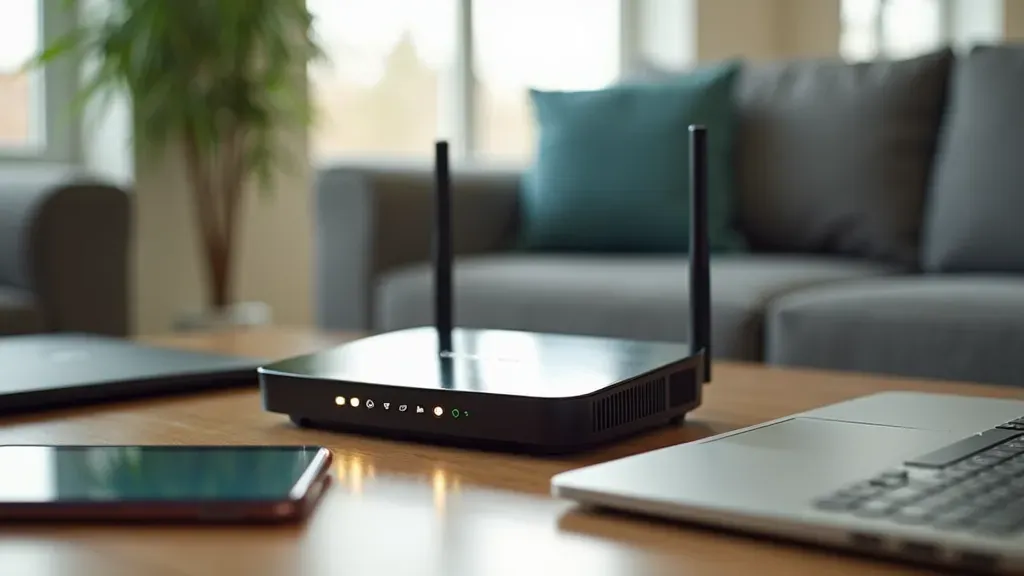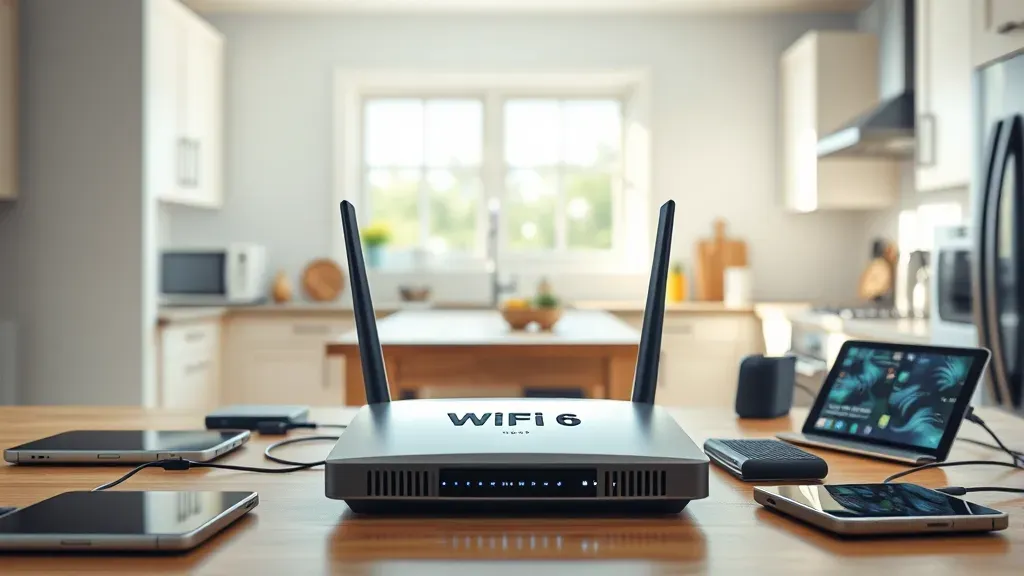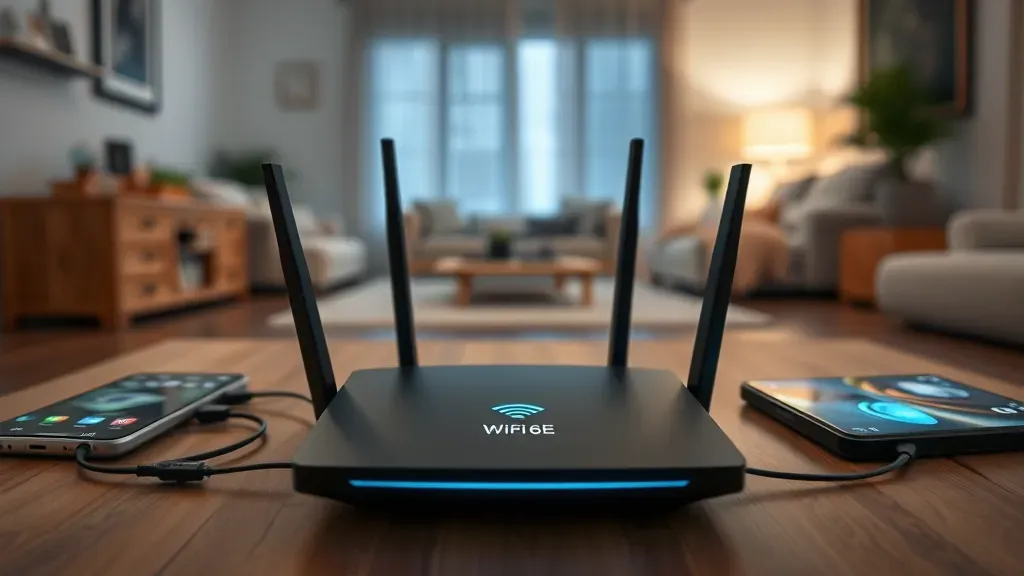Wi-Fi growth is at a great pace, with each version offering and delivering faster speeds, better connectivity, and more reliable performance. WiFi 6 greatly improved effectiveness in both home and business networks, especially in crowded areas. But, WiFi 6E raised the bar by adding access to the 6 GHz band. It enables quicker, more reliable connections.
So, what are the actual differences between WiFi 6 vs WiFi 6E, and which one is right for you?

What is Wi-Fi 6?
Wi-Fi 6 is the industry name for 802.11ax. The sixth version of Wi-Fi is much better than its older versions. It is faster and has a higher capacity. It also handles multiple connected devices more effectively. This is important in today’s connected world because most households have dozens of devices that can connect to the internet at one time.

The key advantages of Wi-Fi 6 include the use of OFDMA. This technology lets multiple devices use the same channel at the same time. It reduces delay and improves performance. Wi-Fi 6 introduces TWT. It saves power for connected devices by allowing them to schedule when to wake up and communicate. This preserves battery life.
Now, from a pure view, it can get as high as 9.6 Gbps, which is roughly three times faster than its older version, Wi-Fi 5. Of course, your speed will depend on your ISP, devices, and network overcrowding.
What is Wi-Fi 6E?
Wi-Fi 6E, on the other hand, extends the features of Wi-Fi 6 further into the 6 GHz band. Given this, they limit disruption. However, since this band remains unused, we can increase data transfer rates when transmitting Wi-Fi.

Meanwhile, with Wi-Fi 6E, users will get as much as 1,200 MHz of data capacity, up from 80 MHz on the 2.4 GHz band and 500 MHz on the 5 GHz band. This extra data capacity means more, less crowded channels. They are perfect for high-demand tasks like virtual reality, 4K and 8K streaming, and online gaming.
Wi-Fi 6E uses a new frequency, the 6 GHz band. It’s available only to devices that support it. You need a compatible router and devices to connect to this new frequency. But, for those willing to invest in this new tech, the benefits are there. They are big, especially in busy homes with many connected devices.
WiFi 6E vs WiFi 6: Key Differences
Key differences between Wi-Fi 6 and Wi-Fi 6E include the following:
- Frequency Bands: Wi-Fi 6 works in the 2.4 GHz and 5 GHz bands. Wi-Fi 6E adds the 6 GHz band. This provides more data capacity and less disruption.
- Available Channels: Wi-Fi 6E has more channels, with each channel carrying more data within to reduce overcrowding. The 6 GHz band boasts 59 more channels of 20 MHz, meaning better performance, particularly in crowded areas.
- Speed and Latency: Wi-Fi 6E is faster and has a lower delay than Wi-Fi 6. This is because it has more channels and less disruption in this frequency band. This becomes important in applications such as VR and streaming.
- Device Ability to Work With: Wi-Fi 6 works with older devices running on Wi-Fi. On the other hand, Wi-Fi 6E requires devices that can actively work within the 6 GHz band. When users look to upgrade their network, it has better future readiness.
Why Upgrade to Wi-Fi 6E?
Wi-Fi 6E Upgrade: Why You Should Skip It Wi-Fi 6E has some benefits. They matter if you live in a crowded area with other networks. Here’s why you should upgrade:
- Reduced Interference: The 6 GHz band is less disrupted than the 2.4 GHz and 5 GHz bands. So, connections are smoother and may be faster.
- Improved Security: Wi-Fi 6E will use WPA3, the latest security rule. It prevents devices from connecting, which guards against online dangers.
- Better Performance in Crowded Environments: Wi-Fi 6E’s additional channels make it easier to handle multiple high-demand activities at once without experiencing slowdowns.
How Does Wi-Fi 6E Improve Streaming and Gaming?

For those who stream HD content or online games, Wi-Fi 6E’s benefits will make a big difference. The 6 GHz band enables higher data transfer rates, along with less overcrowding—meaning you are less likely to experience slowdowns. This is pretty useful for:
- 4K and 8K Streaming: With the high volume of data that Wi-Fi 6E can handle, it is suitable for streaming Ultra HD content with absolutely no drops.
- Virtual Reality: It needs a high-data, low-delay connection for a smooth experience. Wi-Fi 6E will be well-suited for this task with its 6 GHz band.
- Online Gaming: Low delay means better enjoyment of gaming. The added channels in Wi-Fi 6E mean that your gaming connection won’t struggle for data capacity with other devices.
Is Wi-Fi 6E Worth It for Home Use?
Whether Wi-Fi 6E is worth it for your home depends on your needs and setup. If you have many devices on your network, this may be worth it. It applies if you have smart home gadgets or stream high-quality content often. Wi-Fi 6E will perform best in crowded areas. It will be most effective when using unused radio bands and high data use.
For a small household with few devices, Wi-Fi 6 is enough. It can handle light internet use, like browsing and HD streaming.

FAQs
What is the difference between fiber and wireless internet?
The major differences between fiber and wireless internet stem from how they deliver service. Fiber internet uses fiber-optic cables for extremely fast speeds. Wireless internet uses radio waves. Generally, fiber provides non-changing speeds and is faster compared to the use of wireless connections.
How much slower is internet over wireless compared to wired connections?
Wireless connections are usually slower than wired ones. This is due to possible disruption and signal loss. Wired usually offers a more stable or consistent speed. For example, a Wi-Fi connection can have speeds 10% to 30% slower than a wired connection under normal conditions.
What is the difference between Wi-Fi and the Internet?
Wi-Fi is the term used to refer to wireless technology that allows devices to wirelessly connect to a local network. It is the Internet, which is a global network that gives access to information and services from all over the world.
New Wi-Fi versions keep appearing. Each offers faster speeds, greater capacity, and better security. WiFi 6 vs WiFi 6E are both great, modern options. They are much better than older Wi-Fi versions. Wi-Fi 6E is better for those wanting to prepare their network for the future. It is also good for high-speed, low-delay connections for gaming and 4K streaming.
You may also be interested in this comparison between eSIM vs Nano SIM card: Which Is Better?
